39 Delectable European Freshwater Fish Dishes Worth Tasting
European freshwater fish cuisine represents a rich tapestry of culinary traditions that tantalize taste buds across diverse regions.
Fascinating flavors emerge from rivers, lakes, and streams where aquatic delicacies thrive in pristine waters.
Skilled chefs transform these swimming treasures into mouth-watering meals that reflect local cultural heritage and cooking techniques.
Regional ingredients, seasonal variations, and time-honored preparation methods contribute to the distinctive character of these delectable dishes.
Passionate home cooks and professional chefs alike celebrate the versatility and nutritional value of these underwater protein sources.
Delicate textures, subtle seasonings, and innovative cooking approaches elevate simple ingredients into extraordinary gastronomic experiences.
Each preparation tells a story of landscape, tradition, and culinary creativity that connects generations through shared meals.
You can savor the delightful world of 39 popular European freshwater fish dishes that showcase culinary mastery:
Popular European Freshwater Fish Dishes for Food Lovers
Europe’s lakes and rivers provide fish dishes that shine in both homestyle kitchens and fine dining rooms. Delicate trout, hearty perch, and more are cooked with regional flair for a true taste of the land.
Loimulohi
Loimulohi represents a distinctive Finnish salmon-smoking technique where fish transforms directly over open flames on vertical wooden planks.
Nordic fishermen traditionally use fresh salmon or rainbow trout seasoned simply with sea salt and local ingredients like lemon juice, honey, or juniper berries.
Fire proximity controls cooking time and intensity of smoky flavor.
Vertical plank placement allows natural wood essence to infuse through fish flesh.
Salmon slowly cooks while absorbing rich woodsmoke characteristics.
Outdoor cooking method connects strongly to Finnish wilderness traditions.
Wild-caught fish becomes a rustic delicacy through patient, elemental cooking.
Saran U Rasljama
Saran u rasljama are traditional Croatian fish preparations from Baranja featuring whole carp roasted slowly over wood fires, infusing smoky flavors into tender meat.
Croatian fishermen developed this unique cooking method using forked branches to suspend large fish above open flames.
Wood-fired cooking techniques allow precise temperature control and gradual heat distribution across the fish's surface.
Salt and ground red paprika enhance the carp's natural flavors during final cooking stages.
Regional white wines complement the dish's rich, smoky profile.
Spring onions and potato salad serve as traditional accompaniments.
Baranja's culinary traditions highlight this specialized cooking approach.
Locals consider this method a signature technique for preparing fresh regional fish.
Saramura
Saramura is a signature Romanian seafood dish featuring grilled fish simmered in a zesty vegetable broth that captures the essence of Dobrogea's coastal cuisine.
Sea salt griddle-pan grilling intensifies the fish's natural flavors before it bathes in a vibrant mixture of boiling water, chopped tomatoes, bell peppers, and fresh herbs.
Garlic and lemon juice add sharp, tangy notes to the delicate fish preparation.
Chefs traditionally serve saramura alongside creamy mamaliga, a polenta-like cornmeal side dish.
Fishermen along the Black Sea coast developed this method to preserve and enhance seafood's freshness.
Salt plays a crucial role in both cooking technique and flavor profile.
Mediterranean culinary influences shine through in this simple yet sophisticated dish.
Quenelles De Brochet
Quenelles de brochet are elegant French fish dumplings originating from Lyon, crafted with finely ground pike fish and a creamy panade mixture of butter, flour, milk, and eggs.
Chefs carefully shape these delicate dumplings by hand, creating a smooth oval form that symbolizes French culinary refinement.
French gastronomes traditionally serve quenelles in a rich Nantua sauce made with crayfish, highlighting the dish's luxurious texture and flavor profile.
Pike fish provides a distinctive, mild taste that absorbs butter and cream beautifully.
Seasonings like salt, white pepper, and nutmeg enhance the quenelles' subtle complexity.
Professional technique requires precise temperature control during preparation to maintain the dumplings' light, airy texture.
Lyon restaurants often present quenelles as a prestigious first course or main dish.
Perkelt Od Soma
Perkelt od soma represents a hearty Croatian fish stew originating from Slavonija and Baranja, blending Hungarian culinary traditions with local seafood expertise.
Croatian cooks slice catfish into tender pieces and slowly simmer them with sweet and spicy red paprika, creating a rich, warming dish.
Onions, garlic, and crispy bacon infuse deep flavor into the stew, transforming simple ingredients into a complex meal.
Traditional preparation involves cooking the fish until it becomes tender and succulent, absorbing the robust spice blend.
Regional restaurants frequently serve perkelt od soma alongside homemade noodles mixed with cheese and bacon bits.
Baranya County claims this dish as a signature recipe, reflecting its cultural culinary heritage.
Hungarian influences shine through the cooking technique and spice selection.
Fishermen and home cooks have perfected this recipe over generations, making it a beloved regional specialty.
Halaszle
Halaszle is a spicy Hungarian river fish soup bursting with hot paprika and traditional outdoor cooking methods.
Hungarian fishermen originally prepared this robust soup in large kettles over open fires along riverbanks.
River fish like carp, catfish, perch, and pike form the soup's hearty base, sourced directly from Hungary's Tisza and Danube rivers.
Szeged and Baja regions offer distinctive versions with unique preparation styles and ingredients.
Fishermen carefully selected fresh catches to create this flavorful soup that reflects Hungary's river fishing culture.
Hot paprika defines the soup's intense flavor profile, transforming simple river fish into a complex, warming dish.
Fish Paprikash (Hal Paprikas)
Fish paprikash blends Hungarian culinary tradition with spicy freshwater fish stew cooked in massive cauldrons over open fires.
Hungarian fishermen developed this hearty dish using local catfish, starlet, pike, and carp as primary ingredients.
Ground red paprika dominates the flavor profile, creating an intense and complex taste ranging from mild to fiery hot.
Sour cream adds a smooth, rich texture to the stew's robust character.
Traditional preparation involves carefully layering fish with generous paprika seasoning.
Homemade noodles typically accompany the dish, enhancing its rustic appeal.
Regional cooking competitions celebrate fish paprikash's cultural significance.
Multiple Hungarian communities continue preserving this generations-old recipe through passionate preparation and shared meals.
Baliq Kebab
Baliq kebab represents Azerbaijan's grilled seafood specialty featuring fresh sturgeon from Caspian Sea waters.
Fishermen slice sturgeon into chunky pieces and marinate them with bright lemon juice, fragrant dill, and simple salt seasoning.
Grill masters carefully thread marinated fish chunks onto metal skewers and cook them over direct flames.
Heat transforms fish pieces into crispy, golden morsels with smoky exterior and tender interior.
Azerbaijani families serve baliq kebab alongside sliced onions and ripe tomatoes for added freshness.
Lemon wedges complement the grilled fish, enhancing its natural maritime flavors.
Restaurants and home kitchens across Azerbaijan prepare this classic summer dish with traditional techniques.
Street food vendors often sell baliq kebab as a quick, satisfying meal for hungry locals and tourists.
Drunken Carp (Pijani Saran)
Drunken carp embodies Croatian culinary creativity through its unique wine-infused preparation method that transforms a simple fish into a flavorful regional specialty.
Croatian fishermen in Slavonia and Baranya traditionally salt and stuff whole carp with abundant garlic cloves before baking it in a fragrant mixture of wine, lemon juice, oil, and rosemary.
Baked potatoes typically accompany the dish as a classic side.
Lemon slices and fresh parsley provide a final garnish that brightens the fish's rich flavors.
Restaurant menus rarely feature this dish outside its original region.
Wine's role in the recipe creates the playful "drunken" descriptor.
Hunters and farmers pioneered this hearty meal generations ago.
Papricas De Peste
Papricas de peste is a hearty Romanian fish stew featuring tender boneless fish simmered in a rich, aromatic sauce of sweet paprika, garlic, and onions.
Hungarian culinary influences shine through its preparation, where white wine and tomatoes create a complex flavor profile.
Fishermen along Romanian rivers traditionally prepared this comforting dish using freshwater catch like carp or trout.
Tomato paste adds depth and color to the sauce, while white wine introduces subtle complexity.
Chopped parsley garnishes the dish, providing a fresh finish.
Traditional accompaniments include creamy polenta, boiled potatoes, or crusty bread for soaking up the flavorful sauce.
Served hot, papricas de peste represents a warm, satisfying meal reflecting Romania's riverside cooking traditions.
Halteperto
Halteperto are crispy Hungarian fish cracklings from Szeged that transform simple catfish into a crunchy, golden delicacy.
Fishermen and home cooks traditionally prepare these snacks by cutting catfish fillets into small strips and coating them with a spicy mixture of breadcrumbs, flour, and paprika.
Seasoned with salt and quickly deep-fried, the fish develops a satisfying crunch that makes it irresistible as a bar snack or casual appetizer.
Hungary's love for this dish stems from its rich fishing culture and abundant river fish.
Catfish provides the perfect protein base for this regional specialty.
Oil temperature and coating consistency determine the final texture of these addictive fish bites.
Szeged's culinary traditions highlight these crackling fish pieces as a simple yet flavorful treat.
Roast Pike (Brochet Au Four)
Brochet au four embodies French coastal cuisine with a whole pike transformed into a rich, elegant seafood masterpiece.
French fishermen traditionally prepare this sophisticated dish by carefully stuffing pike with a creamy mixture of breadcrumbs, sautéed onions, garlic, and sorrel.
Soft butter and herbs enhance the fish's delicate flavor during roasting.
Chefs meticulously scale and clean the pike before filling its cavity with a blend of breadcrumbs, eggs, and seasonings.
Wine and heavy cream contribute depth to the stuffing's complexity.
Precise cooking techniques ensure the fish remains moist and flavorful.
Lamprey A La Bordelaise (Lamproie A La Bordelaise)
Lamprey a la bordelaise merges rich maritime history with gourmet French culinary tradition, transforming a once-exclusive aristocratic delicacy into a celebrated regional specialty from Bordeaux.
Regional fishermen carefully catch these prehistoric river creatures between December and May in the Dordogne and Gironde estuary.
Bordeaux chefs meticulously prepare lamprey by hanging it to collect its blood, which becomes a critical ingredient in an intense Armagnac and wine sauce.
Cured ham, red wine, fresh herbs, leeks, onions, and garlic create complex flavor layers in this unique stew.
Chefs briefly flambe the lamprey in its blood sauce, intensifying its rich maritime taste.
Garlic bread croutons and a complementary glass of local red wine traditionally accompany this distinctive dish.
Traditional preparation requires precise techniques passed through generations of French coastal communities.
Bordeaux gourmets consider this dish a sophisticated representation of regional gastronomic excellence.
Pesci In Carpione
Pesci in carpione is a medieval Northern Italian preservation technique transforming freshwater fish into a tangy, zesty delicacy.
Originating near Lake Como and Lake Garda, this method involves frying fish and marinating them in vinegar, olive oil, and aromatic spices.
Swiss Italian regions also embrace this traditional preparation that extends fish freshness through acidic pickling.
Whitefish like perch or trout typically become the star ingredients, carefully coated in flour and lightly fried until golden brown.
Vinegar and white wine create a sharp marinade that softens the fish's texture while adding complex flavor profiles.
Onions, carrots, and herbs often join the pickling process, enhancing the dish's aromatic complexity.
Served cold as an appetizer or light meal, pesci in carpione represents a clever culinary strategy developed before modern refrigeration.
Grilled Trout (Gegrillte Forelle)
Gegrillte forelle stands as a classic Austrian lake fish specialty featuring fresh trout expertly grilled with aromatic herbs and spices.
Alpine restaurants frequently serve this dish near mountain lakes where trout swim abundantly.
Fishermen catch the trout directly from pristine waters surrounding Austrian mountain regions.
Salt, pepper, garlic, dill, and parsley create a simple yet flavorful seasoning blend for the fish.
Restaurant chefs carefully clean and gut the trout before grilling to ensure perfect texture and taste.
Regional Austrian cooking traditions highlight this straightforward preparation method.
Summer dining often includes this light protein-rich meal as a popular menu selection.
Mountain lake regions consider grilled trout a signature summer dining experience.
Trout Risotto (Risotto Con Le Trote)
Trout risotto bursts with alpine flavors from Northern Italy's Veneto region, combining delicate freshwater fish and creamy rice in a luxurious one-pot meal.
Mountain streams provide pristine trout that fishermen carefully poach with aromatic herbs and spices like bay leaves and parsley.
Garlic adds depth while white wine introduces complexity to the risotto's rich profile.
Carefully filleted trout pieces are gently folded into the creamy rice during final stages of cooking.
Nutmeg, cinnamon, and peppercorns contribute subtle warmth and complexity to this traditional northern Italian specialty.
Regional ingredients and careful preparation transform simple components into a sophisticated regional masterpiece.
Trout In Corn Flour (Pastrva U Kukuruznom Brasnu)
Trout in corn flour ranks as a beloved Croatian seafood specialty featuring crispy cornflour-coated freshwater fish quickly fried to golden perfection.
Croatian coastal regions developed this simple yet flavorful preparation method using locally caught trout seasoned with salt and lemon juice.
Fishermen traditionally prepare the fish by washing and thoroughly drying it before coating with fine cornflour.
Sunflower oil provides the ideal frying medium for achieving a crunchy exterior while keeping the fish tender inside.
Chopped parsley adds fresh green color and subtle herbal notes to the finished dish.
Mediterranean influences contribute to the dish's straightforward yet delicious cooking technique.
Trota In Cartoccio
Trota in cartoccio is an elegant Umbrian fish preparation wrapped in heart-shaped parchment paper, steaming delicate trout with aromatic herbs and citrus.
Mediterranean flavors infuse the fish through a gentle baking method that preserves moisture and intensifies natural taste.
Rosemary, oregano, and lemon create a fragrant herb blend that enhances the trout's delicate texture.
Garlic adds subtle depth while olive oil ensures the fish remains succulent during cooking.
Cooks fold the parchment into a sealed pouch, brushing the exterior with additional olive oil.
Professional kitchens consider this technique a classic technique for maintaining fish's tender consistency.
Regional Umbrian restaurants often feature this simple yet sophisticated seafood preparation as a signature dish.
Bacon-Filled Trout (Riba Sa Slaninom)
Riba sa slaninom transforms fresh trout into a succulent Croatian specialty bursting with rich flavors from the Virovitica region.
Croatian home cooks carefully stuff whole trout with crispy bacon slices and aromatic herbs before baking the fish in an oven.
Melted butter gets generously drizzled over the trout during cooking, creating a golden-brown exterior with moist, tender meat inside.
Regional spices enhance the bacon's smoky notes and complement the delicate fish perfectly.
Mediterranean cooking techniques ensure each trout emerges juicy and flavorful.
Regional kitchens often serve this dish with roasted potatoes or fresh salad.
Catfish In White Wine (Som U Vinu)
Som u vinu embodies Croatian coastal cuisine through its succulent catfish gently poached in white wine, creating a delicate seafood delicacy from Slavonija.
Regional fishermen traditionally prepare this dish by carefully skinning and cleaning fresh catfish before cutting it into thick pieces.
Butter and salt enhance the fish's natural flavors while white wine provides a subtle, aromatic cooking liquid.
Lemon wedges add bright, zesty notes that complement the mild fish texture.
Slow cooking ensures the catfish remains tender and flaky throughout the preparation.
Mediterranean cooking techniques shine in this simple yet elegant recipe.
Sailors and inland communities alike enjoy this straightforward seafood preparation.
Regional white wines from Croatia perfectly match the dish's flavor profile.
Friture De La Moselle
Friture de la Moselle are crispy, golden-brown small river fish deep-fried to perfection in Luxembourg's traditional cuisine.
Fishermen catch these tiny fish directly from Moselle river waters, selecting multiple species for this beloved dish.
Salt, pepper, and a quick lemon juice bath prepare the fish for their signature coating.
Flour and egg batter create a light, crunchy exterior that seals in delicate fish flavors.
Restaurants near the Moselle river often feature this specialty on their menus.
Visitors to Luxembourg frequently seek out this simple yet delicious river fish preparation.
Tsatsa
Tsatsa are crispy, golden-brown sprats deep-fried whole along the Black Sea coast, transforming tiny fish into a crunchy snack beloved by locals.
These small fish get lightly coated in flour or cornmeal before frying, creating an irresistible golden exterior that crackles with each bite.
Fishermen and coastal communities have long enjoyed tsatsa as a quick, satisfying meal that preserves the fish's natural maritime flavor.
Salt and a fresh lemon slice often accompany the fish, enhancing its simple yet robust taste.
Diners eat tsatsa completely whole, including bones and head, which adds to its rustic charm.
Georgia and Turkey particularly celebrate this street food tradition.
Seafood restaurants and beach-side vendors frequently serve tsatsa as a popular appetizer.
Travelers seeking authentic coastal cuisine find tsatsa a perfect representation of regional culinary traditions.
Matelote
Matelote is a robust French fish stew originating from riverside regions, featuring freshwater fish like eel, salmon, and carp simmered in a rich wine-based broth.
Sailors and fishermen traditionally prepared this hearty dish using their daily catch and regional wines from Burgundy or Loire Valley.
French maritime communities developed matelote as a nourishing meal to warm and sustain workers after long days on rivers and lakes.
Classic recipes incorporate multiple fish varieties, creating complex layers of flavor through careful selection of ingredients.
Wine plays a critical role in developing the stew's depth, with red or white varieties adding complexity to the broth.
Fresh herbs and aromatics like shallots, garlic, and parsley enhance the seafood's natural flavors.
Salt, pepper, and sometimes cream help balance the dish's robust character.
Professional chefs and home cooks alike continue to celebrate matelote as a rustic, comforting French culinary tradition.
Truite Au Bleu
Truite au bleu are rare French poaching technique where freshly caught trout magically transforms blue through a unique preparation method.
Fishermen quickly stun the trout before gutting and soaking it in vinegar, which causes its natural mucus to turn a stunning blue color.
Regional French culinary traditions in Alsace, Dauphine, and Jura claim ownership of this distinctive technique.
James Beard connected the dish's origins to French Alpine and Swiss regions, while Escoffier noted its popularity in late 19th-century Germany.
Skilled fishers carefully poach the blue-tinted trout in court-bouillon, creating a delicate fish dish.
Servers typically accompany the trout with boiled potatoes, fresh parsley, lemon wedges, and melted butter.
Traditional preparation requires extreme freshness and precise handling to achieve the signature blue color.
Truite au bleu remains a fascinating example of precise, traditional European fish preparation techniques.
Cironka
Cironka is a traditional North Macedonian seafood specialty featuring common bleak fish preserved through an intricate fermentation and drying technique.
North Macedonian fishermen carefully salt and ferment small bleak fish for several days, creating a unique preservation method passed down through generations.
Fishermen thread the salted fish and hang them to dry, concentrating their flavors and transforming their texture.
After complete drying, cooks briefly fry the fish before immersing them in hot water to reduce excessive saltiness.
Regional communities near Lake Ohrid have perfected this preparation over centuries, making it a significant part of their culinary heritage.
Lake Ohrid's abundant fish populations contribute to the dish's historical importance in North Macedonian cuisine.
Fishermen use traditional techniques that ensure maximum flavor and minimal waste from their catch.
Salt, sunlight, and patient processing create this distinctive regional delicacy that connects modern communities with ancient food preservation practices.
Missoltini
Missoltini are traditional Italian fish delicacies originating from Lake Como that transform ordinary shad into a preserved specialty through an intricate multi-month preparation process.
Local fishermen carefully clean the shad, submerging it in brine before hanging to dry under specific conditions.
Bay leaves add signature flavor to the preserved fish during careful pressing and oil extraction.
Skilled artisans monitor the delicate process to prevent spoilage and ensure quality.
Fishermen typically catch shad between May and June, though missoltini require several months of patient processing.
Ancient preservation techniques guarantee the fish remains edible for extended periods.
Each missoltino represents generations of culinary expertise passed through Lake Como communities.
Regional traditions carefully transform simple fish into a complex and flavorful delicacy enjoyed throughout northern Italy.
Pochouse
Pochouse emerges as a rustic Burgundian fish stew celebrating regional freshwater catches like eel, pike, and sea bass poached in local Aligote white wine.
French fishermen traditionally prepared this hearty dish using their daily river catches and abundant seasonal herbs.
Bacon adds a smoky depth to the stew's flavor profile, complementing the delicate fish.
Garlic, thyme, and bay leaves infuse the broth with aromatic complexity.
Burgundy's culinary heritage shines through this simple yet flavorful preparation.
Fishermen would often cook pochouse directly on riverbanks using their most recent catch.
Wine selection plays a crucial role in developing the stew's characteristic taste.
Careful seasoning and slow poaching ensure tender, perfectly cooked fish.
Truchas A La Navarra
Truchas a la Navarra are succulent trout fillets from Spain's Navarre region prepared with an irresistible crispy exterior and rich flavor profile.
Mountain ham from Navarre elevates the fish's taste by adding a salty, savory dimension to the delicate trout.
Fishermen traditionally catch fresh river trout and quickly transform them into a simple yet remarkable meal using minimal ingredients.
Jamon serrano creates a distinctive layer of flavor when added during cooking, complementing the mild fish perfectly.
Olive oil helps create a golden, crisp coating that seals in the trout's natural moisture and tenderness.
Flour provides a light, crunchy exterior that contrasts beautifully with the soft fish meat.
Salt and parsley enhance the dish's natural flavors without overwhelming the trout's delicate taste.
Fresh lemon juice squeezed over the top adds a bright, zesty finish that balances the richness of the ham and olive oil.
Andorran-Style River Trout (Truta De Rio A Andorrana)
Andorran-style river trout delivers mountain cuisine elegance through a simple yet profound preparation of fresh river fish.
Regional mountain waters provide pristine trout that Andorran cooks carefully season with salt and pepper before coating in light flour.
Crisp frying in lard or olive oil creates a golden exterior that seals in delicate fish flavors.
Fatty ham emerges as the signature element, fried separately and draped over the trout to introduce deep savory notes.
Traditional preparation methods reflect Andorra's rugged landscape and Alpine culinary heritage.
Fish selection depends on local river ecosystems and seasonal availability.
Mountain communities have perfected this recipe over generations, transforming humble ingredients into a memorable meal.
Minimal seasonings allow natural fish and ham flavors to shine through.
Grilled Char (Gegrillte Saibling)
Gegrillte saibling represents an authentic Austrian lake char specialty featuring perfectly grilled fish prepared with meticulous regional techniques.
Mountain lake regions of Austria provide fresh char prized for its delicate flavor and tender texture.
Skilled fishermen carefully select premium fish before seasoning with traditional herbs like dill and parsley.
Fire-kissed skin becomes crispy while maintaining succulent inner flesh.
Alpine restaurants typically serve whole or filleted versions alongside seasonal vegetables or fresh salads.
Summer dining tables welcome this simple yet elegant fish preparation.
Restaurant menus near mountain lakes frequently showcase this traditional Austrian seafood dish.
Carpe Frite Sundgauvienne
Carpe frite sundgauvienne highlights Alsatian culinary tradition through a double-fried carp preparation unique to France's Haut-Rhin region.
Regional fishermen carefully select fresh carp fillets for this signature dish, marinating them in crisp white wine to enhance flavor complexity.
Skilled home cooks season the fish with salt and pepper before coating it generously in semolina for extra crispiness.
Each fillet undergoes two distinct frying stages, creating an exceptionally crunchy exterior while maintaining tender inner flesh.
Restaurants typically serve the golden-brown fish with crisp french fries and tangy mayonnaise.
Green salad accompanies the plate, providing a fresh counterpoint to the rich, savory fish.
Wine from local Alsatian vineyards complements the dish perfectly.
French diners consider this preparation a classic example of regional gastronomic excellence.
Sbroscia
Sbroscia is a rustic lake fish soup from Bolsena, Italy, traditionally prepared by local fishermen using fresh catch and lake water.
Tench, eel, pike, and perch form the protein base of this hearty dish, complemented by mint, potatoes, onions, garlic, tomatoes, and stale bread.
Fishermen would slowly simmer ingredients in earthenware vessels, creating a dense and flavorful soup with regional lake fish.
Hot peppers and olive oil add depth and complexity to the recipe, while the stale bread helps thicken the broth.
Salt seasons the mixture, enhancing the natural flavors of the freshwater fish.
Cooking techniques passed down through generations preserve the authentic preparation method.
Regional ingredients and traditional cooking methods make sbroscia a true reflection of Bolsena's culinary heritage.
Tsotskhali
Tsotskhali are Georgian trout fillets simmered in a light, aromatic broth bursting with fresh herbs and tangy yogurt.
Mountain streams provide pristine Georgian trout for this simple yet flavorful regional specialty.
Cooks prepare fish by cleaning, cutting, and seasoning it with salt and black pepper.
Garlic, parsley, and celery enhance the broth's delicate profile.
Water gently simmers the fish until perfectly tender.
Each piece absorbs subtle herb essences during cooking.
Georgian families often enjoy this protein-rich dish as a comforting meal.
Regional cooking techniques transform basic ingredients into a memorable seafood experience.
Garlic Perch (Smu U Cesnjaku)
Smu u cesnjaku are savory Croatian fish fillets bursting with robust garlic flavors from Slavonija's regional cuisine.
Croatian fishermen traditionally prepare perch by splitting it lengthwise and generously coating the interior with minced garlic and salt.
Hot oil and white wine transform the fish during careful baking, creating a rich and aromatic seafood dish.
Olive oil helps infuse deep garlic notes into the tender fish meat.
Mediterranean cooking techniques ensure each fillet remains moist and flavorful.
Small white wine additions create a silky sauce that complements the fish's natural taste.
Regional ingredients like fresh perch, garlic, and local white wine define this classic preparation.
Baking for fifteen minutes allows ingredients to meld into a simple yet powerful Mediterranean meal.
Rape Con Azafran
Rape con azafran is a Spanish seafood specialty featuring monkfish or hake transformed by saffron's golden touch and delicate frying technique.
Spanish coastal regions prize this dish for its simple yet powerful flavor profile that highlights fresh fish with minimal ingredients.
Saffron provides a distinctive golden color and subtle earthy aroma that elevates the fish's natural taste.
Cooks season the fish with salt and pepper before carefully dredging it in flour.
Hot olive oil creates a crispy exterior while maintaining the fish's tender interior.
Mediterranean cuisine embraces this straightforward preparation that celebrates seafood's pure flavors.
Home kitchens and restaurants across Spain prepare this classic dish with regional variations.
Authentic versions rely on fresh fish, quality saffron, and precise cooking technique to create a memorable meal.
Trota In Bianco
Trota in bianco is a simple yet elegant Umbrian fish preparation featuring fresh trout poached in a light, aromatic broth.
Parsley, garlic, and lemon juice infuse the delicate fish with bright Mediterranean flavors.
Olive oil adds richness while salt and black pepper provide subtle seasoning.
Regional ingredients transform this dish into a classic example of rustic Italian cooking.
Umbrian kitchens have perfected this method over generations.
Soft, flaky fish emerges tender and succulent from its gentle cooking process.
Serving the trout warm highlights its pure, clean taste.
Trotelle Al Vino Rosso
Trotelle al vino rosso are succulent Piedmontese trout fillets braised in rich red wine, creating a classic Italian seafood specialty that transforms humble ingredients into an elegant meal.
Small trout receive a luxurious treatment through careful layering in an ovenproof dish with precise seasoning of salt and pepper.
Shallots and celery leaves sauté gently in olive oil, developing a fragrant base for the cooking liquid.
Red wine and fish stock combine with aromatic bouquet garni spices to create a complex sauce that bathes the delicate fish.
Anchovies add depth and umami to the overall flavor profile of this regional dish.
Traditional preparation involves baking the fish with the wine-based sauce until perfectly tender and infused with robust flavors.
Regional Piedmontese cooking techniques ensure each ingredient contributes to a harmonious, refined seafood experience.
Mediterranean culinary simplicity shines through this rustic yet sophisticated fish preparation.
Hiecht Mat Kraiderzooss
Hiecht mat kraiderzooss is a signature Luxembourg fish dish featuring poached pike bathed in a fragrant green sauce with Riesling wine.
Pike gets carefully prepared by cooking in a rich vegetable and herb stock containing carrots, onions, celery, bay leaves, and peppercorns.
Luxembourg's regional waters provide fresh pike for this traditional recipe.
Fishermen catch the pike from local rivers and streams.
Green herbs create the sauce's distinctive color and flavor.
Wine adds depth and complexity to the sauce's profile.
Careful preparation ensures tender, flaky fish with aromatic herbal notes.
Families and restaurants across Luxembourg cherish this classic seafood preparation.
F’Rell Am Reisleck
F'rell am reisleck is Luxembourg's signature seafood dish featuring freshwater trout transformed by a rich Riesling wine sauce.
Luxembourg fishermen traditionally prepare this specialty by first frying trout in butter until golden brown.
Creamy sauce ingredients include Riesling wine, creme fraiche, and finely chopped shallots.
Herbs like chervil, tarragon, chives, and parsley enhance the fish's delicate flavor profile.
Spices such as paprika, salt, and pepper add depth to the sauce.
After frying, the trout gets completely covered in the aromatic wine sauce.
Luxembourg restaurants and home kitchens often serve this dish with simple side vegetables or potatoes.
Regional wine pairings typically complement the Riesling-based sauce, creating a harmonious dining experience.
What Types of Freshwater Fish Are Commonly Used in European Cuisine?
European cuisine features a variety of freshwater fish, prized for their delicate flavors and versatility across regional dishes. Commonly used freshwater fish include
These freshwater fish highlight the rich aquatic resources of European rivers and lakes, contributing to diverse culinary traditions.

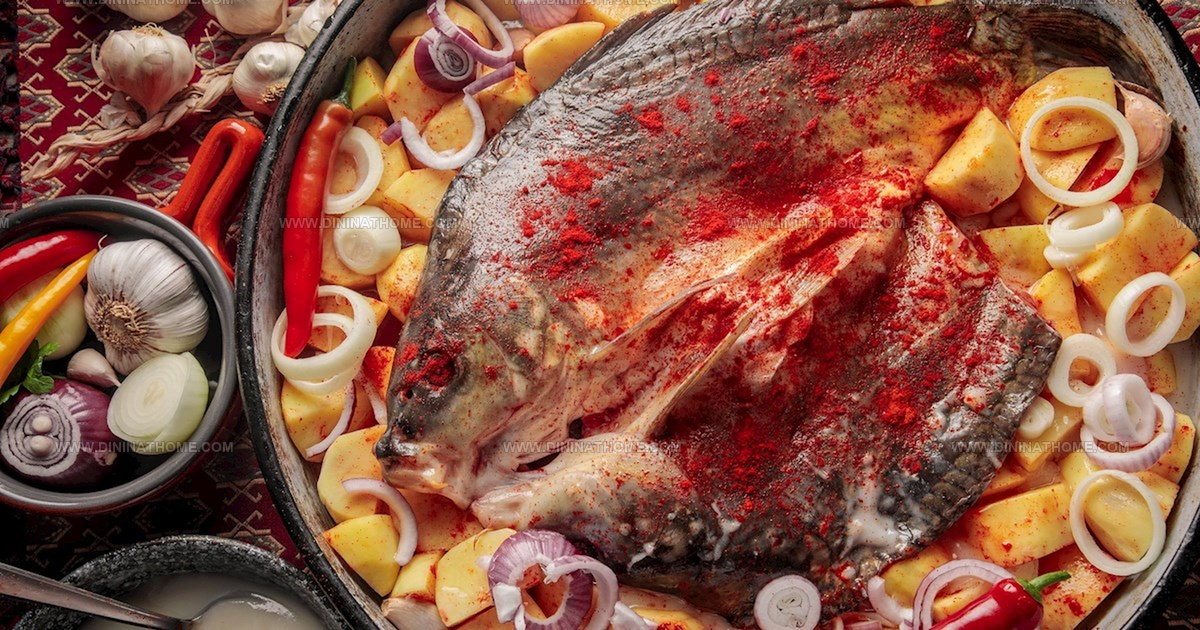
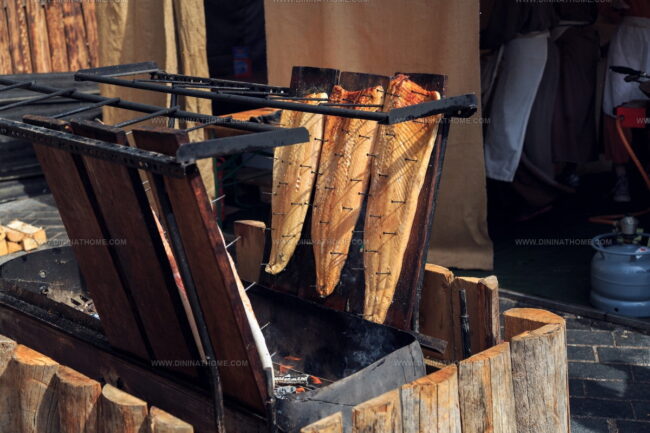
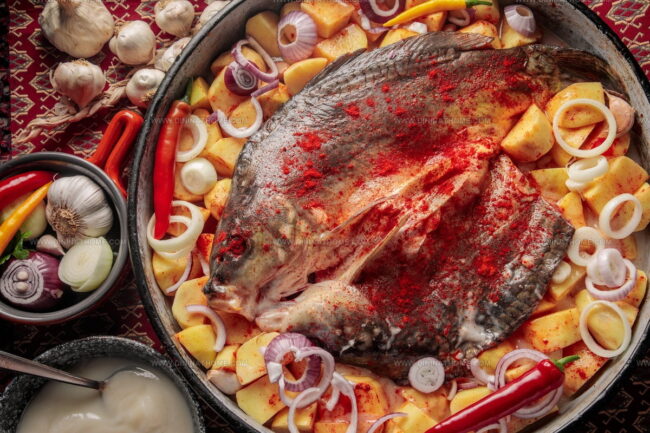
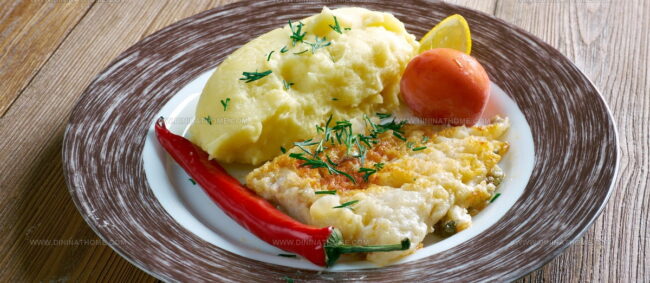
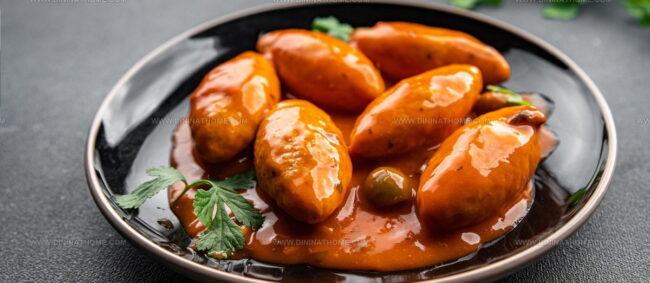
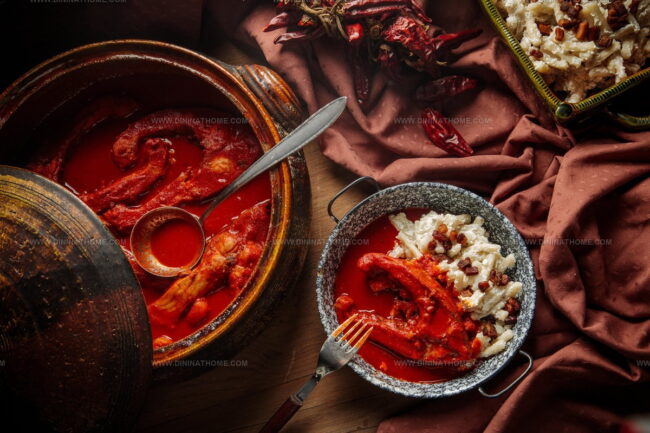
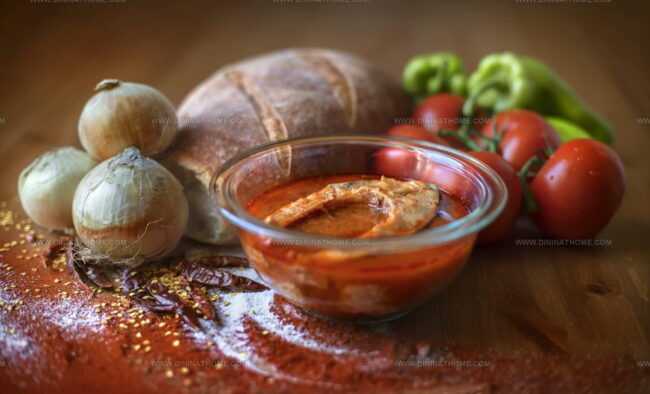
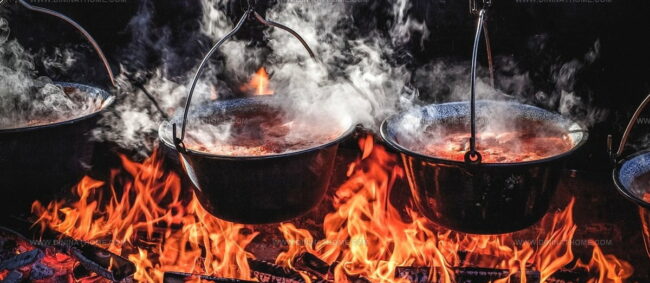
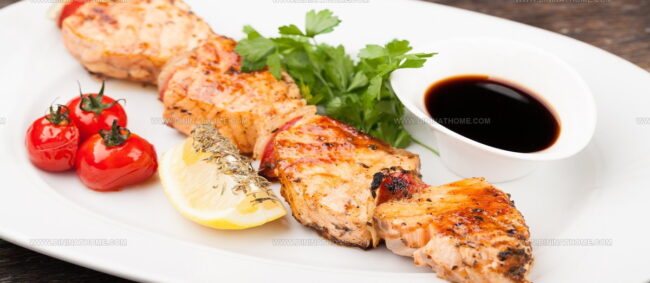
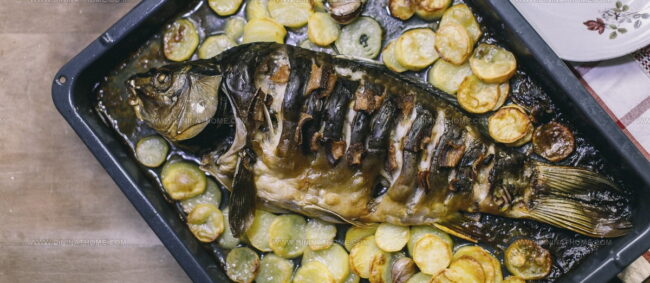
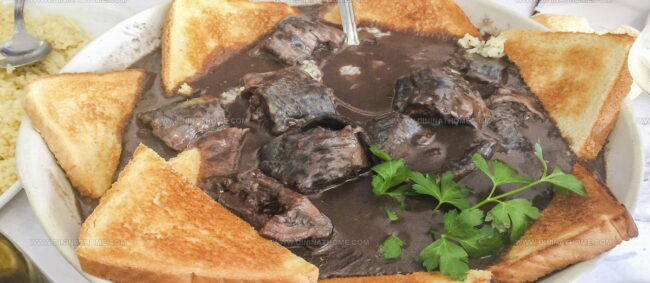
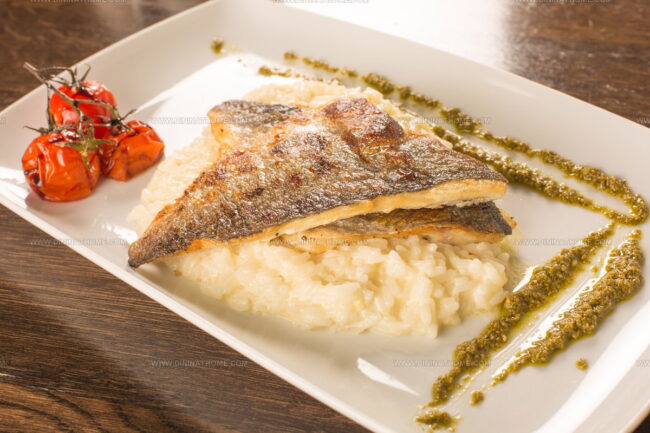
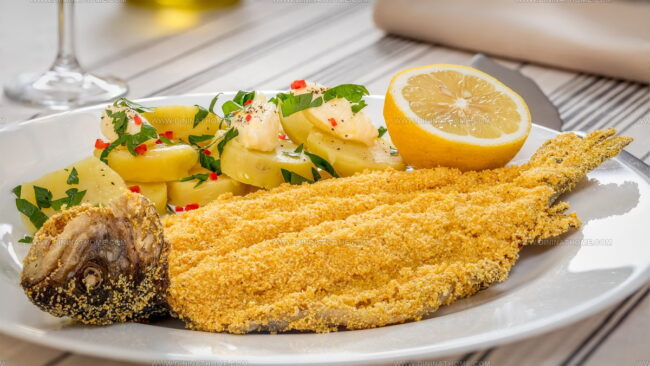
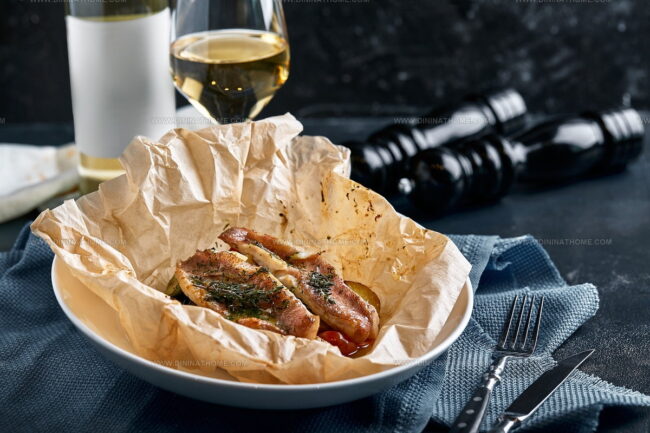
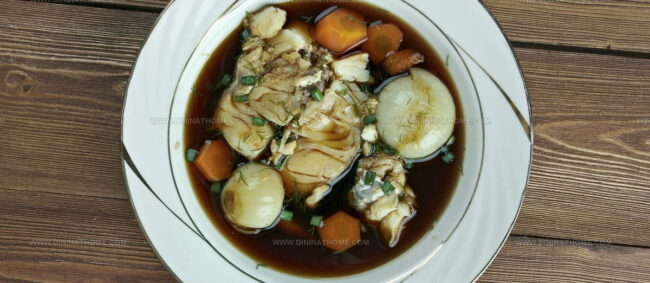
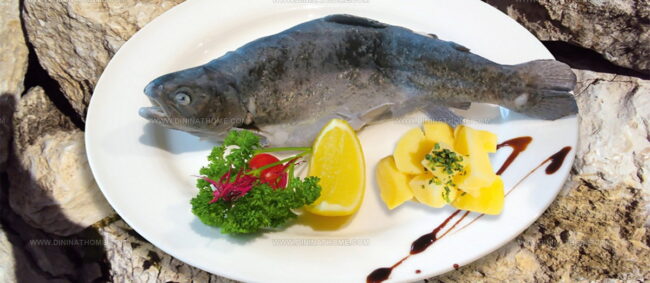
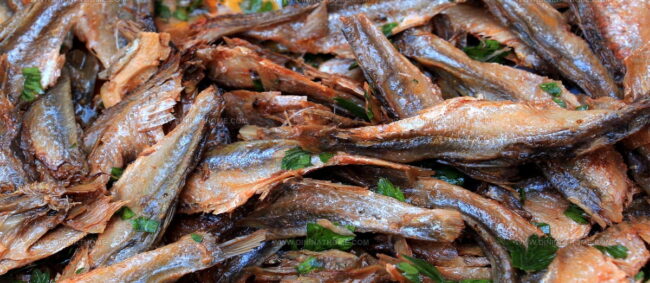
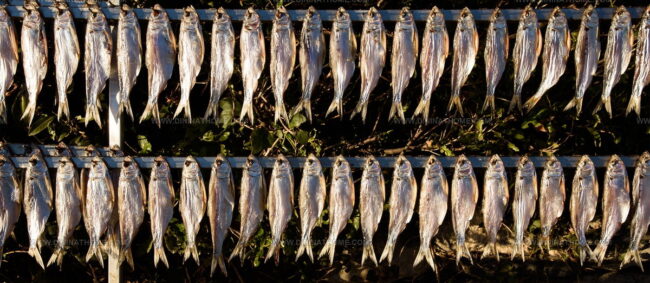
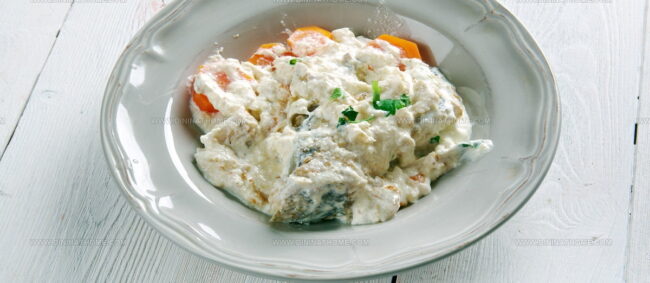
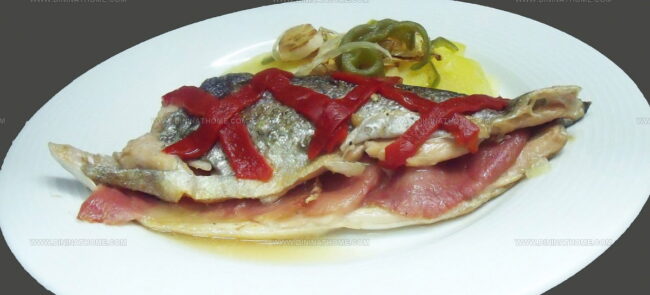
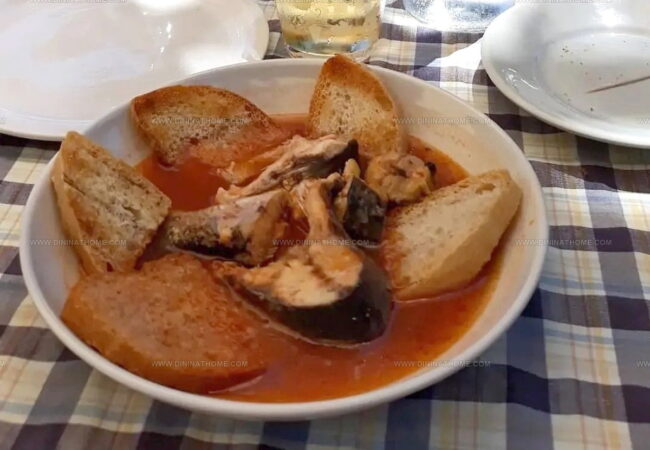
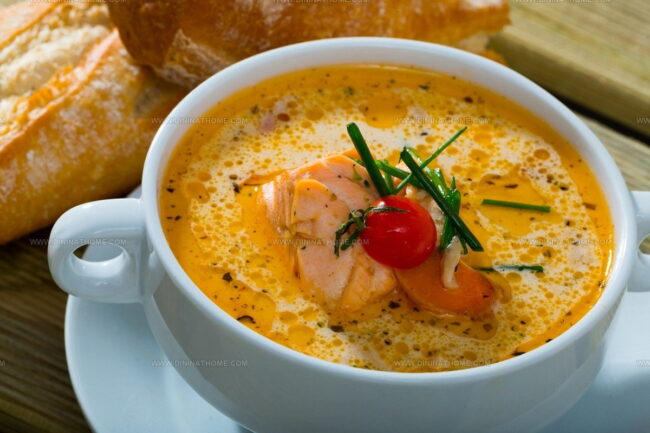
Emily Harper
Nutrition Consultant & Recipe Analyst
Expertise
Healthy Recipe Modification, Nutritional Analysis & Meal Planning, Global Cuisine & Dietary Adaptations
Education
School: French Pastry School, Chicago, IL
Program: L’Art de la Pâtisserie
Focus: Intensive training in traditional French pastry techniques, baking theory, and confectionery arts.
Emily’s journey started in a pastry kitchen but took a detour into the world of health and flavor science.
Graduating from the French Pastry School and studying nutrition opened her eyes to a new mission: making healthy food taste like something you’d actually crave.
At Dining At Home, Emily’s the go-to for smart, feel-good recipes that don’t trade flavor for nutrition.
She’s all about adding a fresh spin on old favorites and finding small ways to make everyday meals a little brighter.
Outside of the kitchen, Emily is most at home walking forest trails, testing plant-based recipes, or sharing a picnic under a wide-open sky.